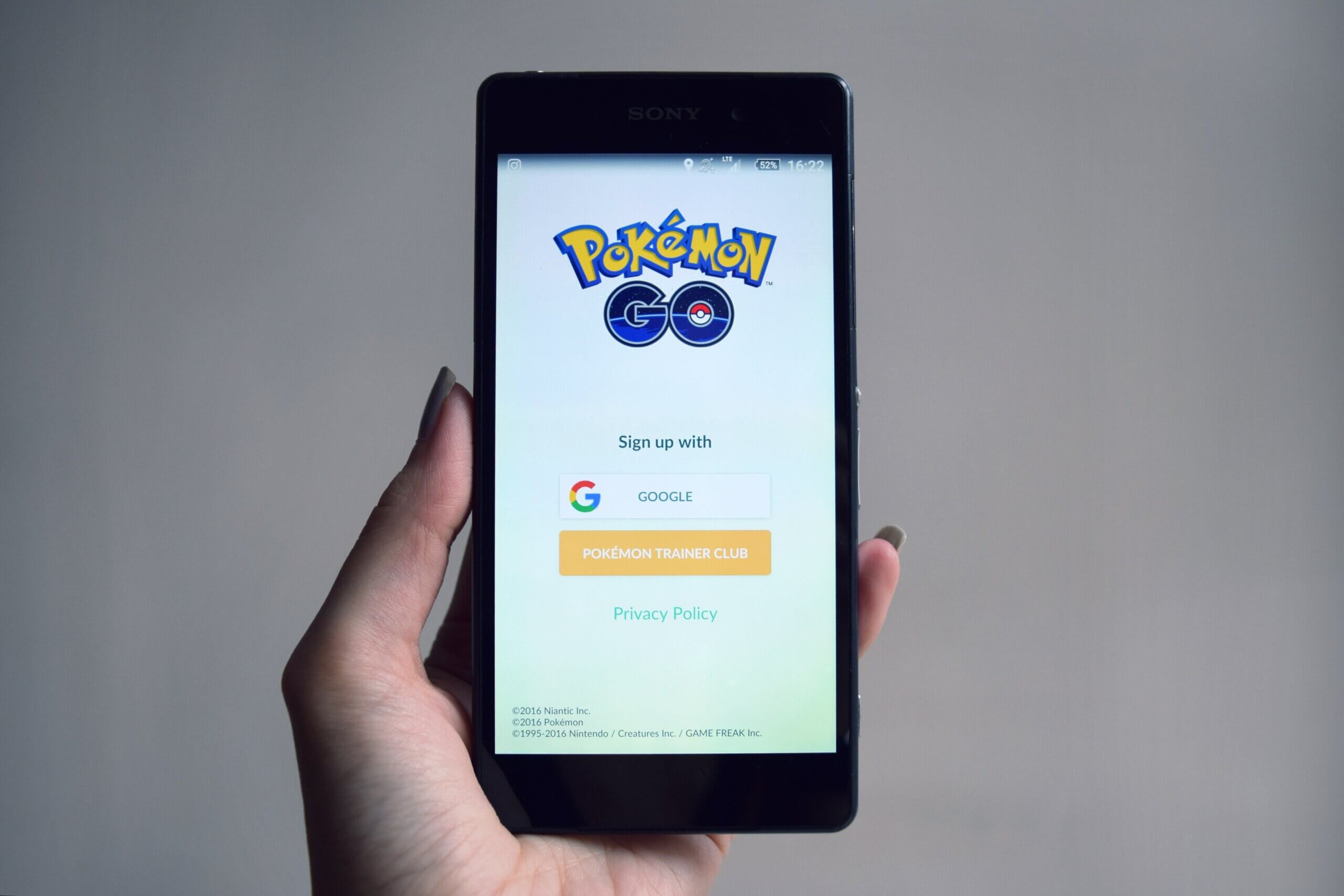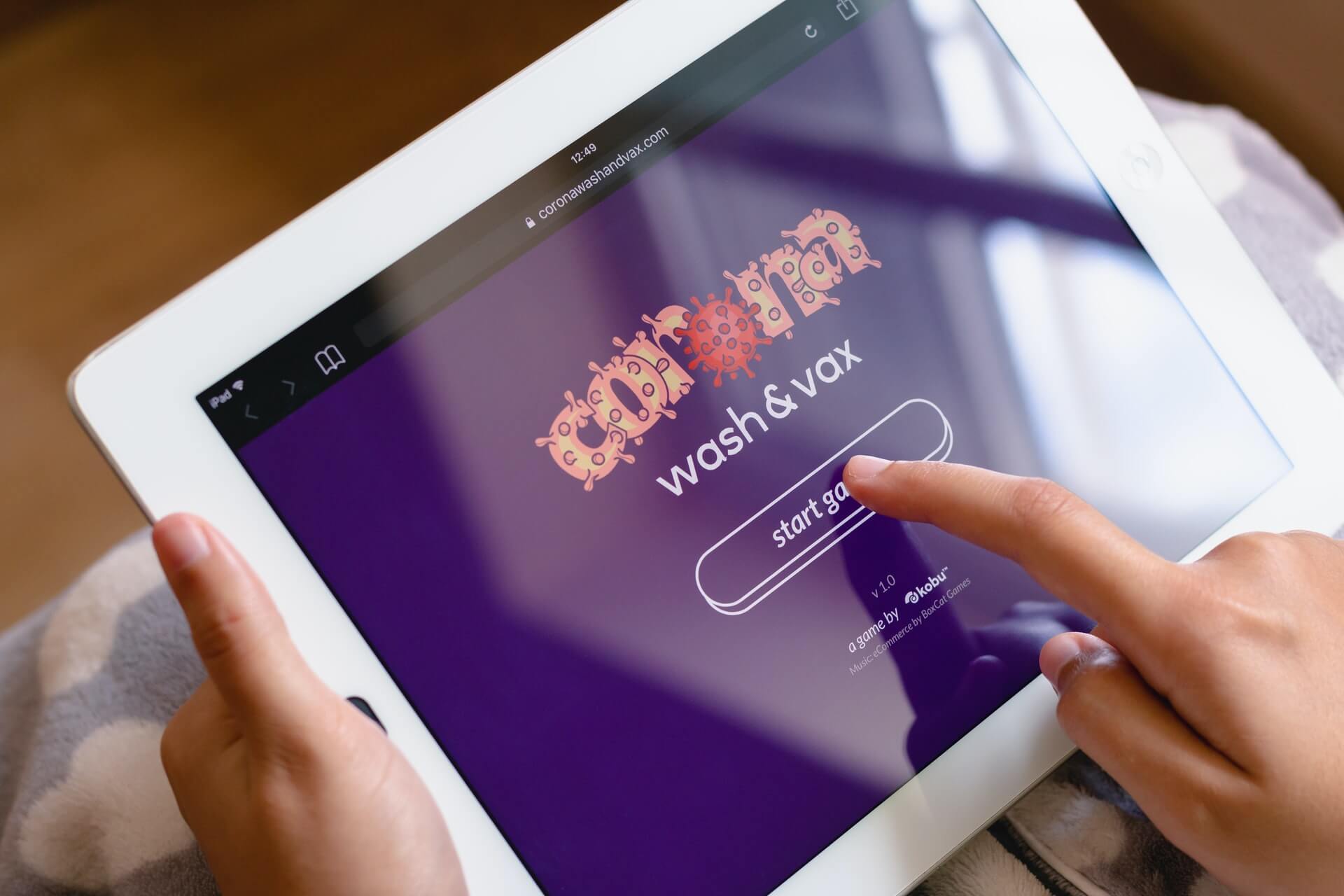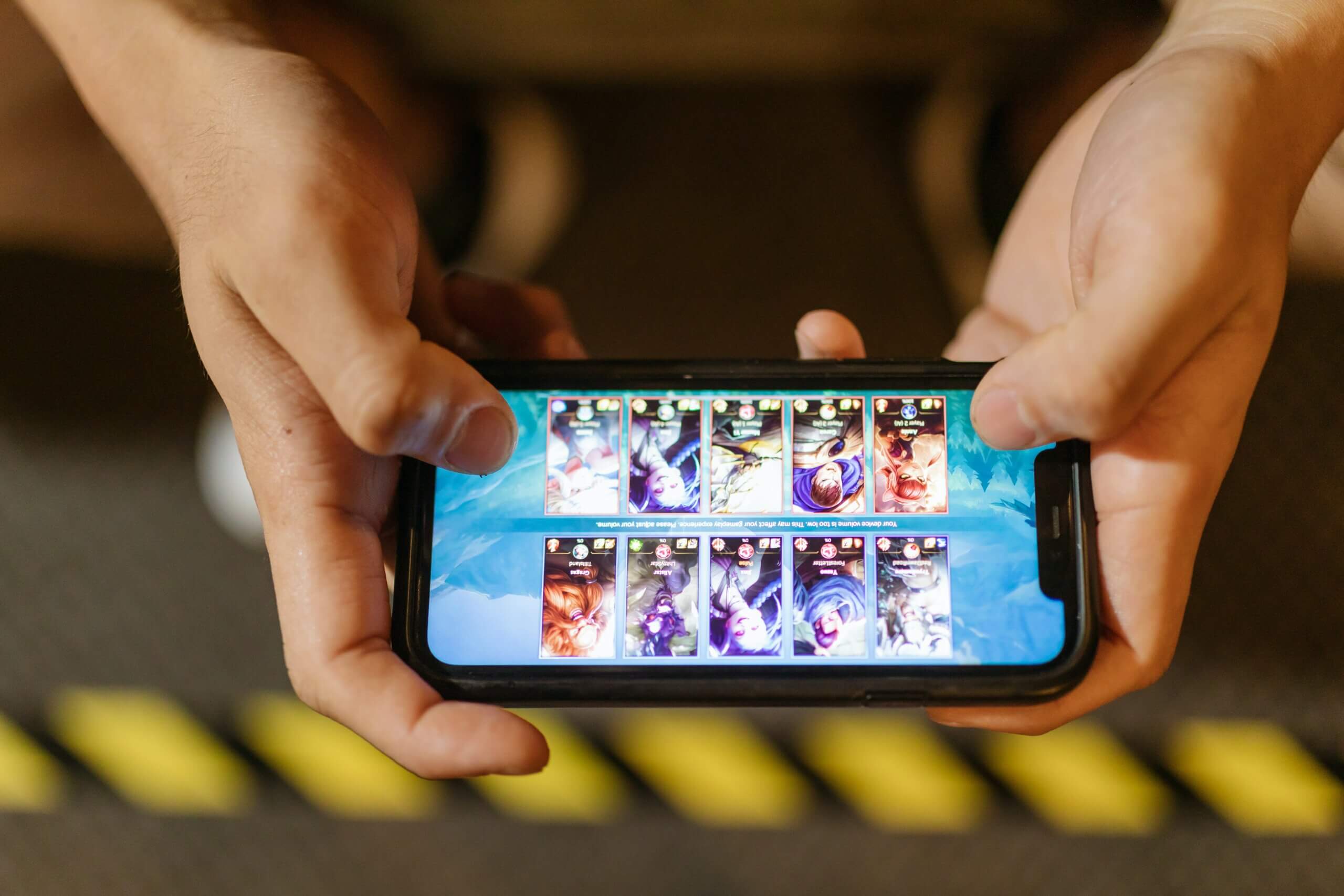Developing and launching mobile game apps are two important milestones. However, concentrating only on these two tasks will not make your gaming app successful. You must use the right mobile game marketing strategies to scale your app.
The gaming industry is enormous. There are 1.57 billion mobile gaming users worldwide. Google Play Store has around 449 thousand gaming apps, while the Apple App Store lists approximately 288 thousand mobile games. With so many available options, it is difficult for apps to make a mark when they do not have a solid marketing plan.
Mobile game marketing is the process of using various marketing techniques and approaches to market a mobile game. The goal is to reach the right target audience. Use organic and paid user acquisition strategies. However, you can achieve this by acquiring more users for your app in the process.
Since numerous options are available, you should take the time to pick the right marketing strategies and test them before integrating them into a comprehensive mobile game marketing strategy. Ultimately, your main goal will be to generate income from your app.
What is mobile game monetization?
The Covid-10 pandemic has changed everyone’s lifestyle and habits. And in terms of mobile gaming, the benefits have been huge. In the first quarter of 2020, the number of mobile gamers spiked by 46%. During this period, many new players started exploring the gaming world. The mobile game industry is booming, and mobile game marketing strategies are proving to make or break new apps.
Firstly, it’s crucial to grasp the basics of mobile game monetization, AKA app developers’ process, to generate income. There are different mobile game monetization models. You should pick one that best suits your business:
- In-app purchases: The leading monetization model that many businesses follow to generate revenue is in-app purchases (IAP). A lot of ‘freemium’ apps are surviving using this model. Freemium apps allow players to experience the game, prompting them to make in-app purchases if they want to experience the game’s additional aspects. For example, users are often encouraged to buy extra lives, weapons, coins, etc., to continue the gaming experience.
- In-game store: Players can use the in-game store to purchase various items (consumables and non-consumables) both with game currency and using real money.
- Consumables: These include items that last for a specific amount of time and others designed to perish (e.g., booster packs and lives.)
- Non-consumables: These are items that players can purchase once and keep with them permanently (e.g., cosmetic items, a new level of a game, etc.)
- In-app ads: App developers allow gamers to access the game‘s features using this monetization model. Ideally, to continue playing, app users should watch all of the game’s in-app ads. This particular model involves three parties: advertisers, publishers, and players.
- Interstitial ads: These are ads that suddenly appear when gaming. Interstitial ads occupy the whole screen and will pause the game until the ad disappears.
No matter which mobile ad model you pick, you need to be careful not to annoy players with too many ads, ensuring they can enjoy their gaming experience by discretely placing ads instead.
Learn More about Mobile Game Monetization: The Ultimate Guide For Beginners
Photo by Pixabay
How to promote your mobile game?
While there are numerous ways to promote a mobile app, here are the top 10 strategies gaming companies adopt:
- Market research: Developing or launching a mobile app, do some market research. Check how your competitors market their apps to understand how you should proceed.
- Soft launch: Consider a soft launch before releasing the app into the market. Give journalists, testers, and influencers early access. Ask them to share feedback, and fix issues they identify. Through this option, you will ultimately be able to present the best version of your app when it’s ready.
- Competitor Analysis: Your competitors can teach you a lot. Use app competitor analysis tools to check what they are doing differently. Check various elements such as titles, descriptions, images, and videos of similar gaming apps like yours to get an idea of how game developers are launching their apps.
- Testing: Testing can help game developers identify various glitches before launching it so players do not face these issues. Alpha and beta testing are two of the main phases of testing.
- App store optimization: As a game developer, app store optimization (ASO) should be on your priority list. If you optimize the app page, you will start getting organic traffic and app downloads. Some elements that need to be optimized on the app page include icons, titles, descriptions, and app reviews.
- Ad campaigns on social media: Paid ads on social media channels are one of the quickest ways to reach your target audience and increase app downloads.
- Cross-promote: Promote your mobile app in one of your published apps or collaborate with another app developer to cross-promote content.
- Google ads’ universal app campaigns: It is one of the quickest ways for you to reach your target audience. Set a goal, such as the number of app downloads or a particular action you want your audience to take on the app, and see the results coming automatically. Google optimizes your ad to help you get optimal results.
- Reviews for the app: When you have more reviews about your app online, potential users will have the curiosity to learn more about the game. It will help in increasing app downloads.
- Partner with a mobile game publisher: While this is the most challenging step, if you can find a mobile game publisher that loves your game, your life will become easier.
Learn More about “10 Best Strategies To Promote Your Mobile Game App.”
How to select the target audience?
Photo by KOBU Agency on Unsplash
There are 2.2 billion active mobile game players in the world today. Of this number, 56% play more than 10 times a week.
Not all games appeal to the same audience. Here are some tips that will help you define your audience:
- Understand your product value: You must understand what kind of audience would like to play your game. Check to see if your target audience like the features you intend to add to your gaming app.
- Conduct market research: Check what features and elements your competitors are adding and try to embrace those components you think are making a difference.
- Demographics of target audience: Define the group, or set of people you think will like your product. It would be best if you defined various factors such as location, age, interest, gender, etc.
- Build user personas: Since there will be more than one user segment you are going to target, take time to build various user personas.
- Understand psychographics: Psychographics refers to a consumer’s psychological and cognitive attributes. They reflect the goals, values, and beliefs of the target audience. While demographics indicate your target audience, psychographics suggests why they will buy or use your product.
Learn More about “How To Identify The Right Target Audience For Your Mobile Game App?“
What is organic and paid mobile game marketing?
Once the app is ready, you should plan on selecting user acquisition models that will help you engage with the target audience. Here are two types of customer acquisition models:
Organic user acquisition model: This marketing strategy depends on techniques and tactics that marketers and app developers use to increase mobile app installs and organic downloads. Here are some of the tactics that help in acquiring customers organically.
- App store optimization
- Content marketing
Paid user acquisition model: In this model, you use paid ads to acquire the target audience for your gaming app. You can reach them a lot faster when you pick this acquisition model.
Here are some of the types of paid ads that you must use:
- Video ads
- Social media advertising
- Google Universal App Campaigns
Learn More about “A Comparison Of Organic Versus Paid Mobile User Acquisition“
What are some of the paid advertising models?
Photo by RODNAE Productions:
Paid advertising is one of the best ways to boost brand visibility and app installs. Here are eight types of paid advertising that you, as mobile game developers and marketers, should use to succeed:
- Display ads: These are graphic advertising found on websites, social media networks, and apps. It works on the cost-per-click (CPC) model, meaning you only have to pay money when someone clicks on your ad.
- Social media ads: These are advertisements run on social media channels such as Facebook, LinkedIn, Twitter, Instagram, etc. Depending on your business, you should focus on the social media channels that you want to use.
- Pay-per-click: This is an advertising model in which you pay money only when someone clicks on your advertisement (e.g., search engine advertising.)
- Video ads: Video ads are growing in popularity. YouTube, Facebook, and Vimeo are examples of platforms where you can run video ads.
- Influencer marketing: Use influencers or famous personalities on social media platforms to endorse or promote your brand or gaming app. You can quickly reach your target audience by picking the right gaming influencer.
- Native advertising: Native advertising does not look like an advertisement because it syncs with the media format you are using ( e.g., sponsored content on news websites.)
- Remarketing/retargeting: This is effective when many people visit a website but don’t make a purchase. You can win them back and increase conversions using remarketing and retargeting ads.
- Microsoft ads: Also known as Bing ads. Microsoft ads allow you to run your advertising campaigns on search engines such as Yahoo, Bing, and DuckDuckGo.
Your mobile marketing strategy should contain some or all of the aforementioned paid advertising models.
Learn More about “What Is Paid Advertising? 8 Types Of Paid Ads And Their Benefits“
Casual mobile games and ways to advertise them
Photo by RODNAE Productions:
In the mobile gaming industry, casual games are a genre that can attract almost anyone, irrespective of age and gender. Most of these games use the free-to-play (F2P) model. They generate revenue through in-app purchases and in-game ads.
Organic and paid mobile game marketing
Marketers and app developers should use a mix of organic and paid advertising models to reach the target audience.
App store optimization and publishing regular content on social networks and websites are examples of organic mobile game marketing. Running ad campaigns on social media, search engines, and other channels are essential elements of paid advertising strategy.
Target Audience
One of the first things you should do when you plan to launch your gaming app is to decide on your target audience. Create user segments based on location, age, gender, and interests. Motivational drivers and player archetypes define your target audience.
Motivational Drivers
Eight motivational drivers inspire a person to play a game. App developers need to understand these frameworks when developing a casual game.
- Competition
- Reasoning
- Exploration
- Relaxation
- Skillfulness
- Creativity
- Achievement
- Socializing
Player Archetypes
Motivational drivers are the foundation for the eight-player archetypes. Here is a list of the player archetypes:
- Expressionists
- Skillmasters
- King of the hills
- Networkers
- Strategists
- Treasure hunters
- Thinkers
- Thrill-seekers
Create engaging ad creatives
To stand out from the competition, your Ad creatives should be exciting and enjoyable. Here are some strategies you should use:
- Create video ads: Check your competitors to see what kind of ads they employ to appeal to their target audience. Show attractive pieces from your game in the ad.
- Influencer marketing: Use influencers with many followers to endorse or promote your gaming app.
- Social media advertising: Advertise your game on popular social networks to reach your target audience. Social media advertising not only increases brand visibility but also can increase app installs.
Learn More about “How To Advertise A Casual Mobile Game In 2022?”
How to do app store optimization?
Photo by Tima Miroshnichenko:
App store optimization (ASO) is the process you follow to increase visibility on app stores that list your product. Some popular app stores are Google Play Store and the Apple App Store. The following can help you to optimize your app for this purpose:
- The app’s title and subtitle: These are the elements that gamers will see first. Take time when thinking up a catchy and easy-to-remember title and subtitle. Google Play Store allows you to write a title that’s 50 characters long, whereas Apple App Store only allows 30 characters.
- Description: Marketers can add written descriptions of their gaming apps of up to 4,000 characters on both the Google and Apple app stores. These descriptions should include relevant keywords for this segment in the Google Play Store. Its algorithm will use this information to decide your app ranking. Ensure that you give as much information as possible.
- Keyword research: Keyword research and planning are crucial. Apple App Store permits you to submit keywords in a segment that can accommodate up to 100 characters. Conversely, Google Play Store does not provide that option but will index all the content you include on the app page.
- Screenshots and preview videos: When you place screenshots and videos that increase curiosity, you can increase the click-through rates and app installs.
- Review and ratings: Encourage users enjoying your game or app to leave a review and/or rating. These two elements decide your app’s ranking. Use various methods to encourage them to do so.
- Number of downloads: The number of downloads you have for the app will decide your app’s rank in its store. Use both organic and paid marketing tactics to increase app installs.
- Continue to optimize: Lastly, ASO is not a one-time action but a continuous process. Check what is working and what is not. If necessary, modify the title, description, keywords, videos, and screenshots.
Learn More about “The Ultimate 7-Step Guide To App Store Optimization.”
How to use content marketing to promote gaming apps?
Photo by Yan Krukov:
Content plays a pivotal role in mobile app marketing. Content marketing should be one of your priorities if you want to excel. Here are some steps you can follow for content creation:
- Long-term plan: Creating content should be a long-term goal. You will only get results when you consistently post content on various channels.
- Editorial calendar: You must have an editorial calendar to control the content you publish. This calendar will help you schedule posts in advance.
- Blog posts: Understand your customers’ pain points. Undertake keyword research. Create content and publish blog posts regularly. And consistently post content on your blog to educate your customers on how to tackle different business challenges.
- Search Engine Optimization: SEO is crucial. It helps bring visibility to your content. On-page SEO ensures that all of the web pages on your website are fully optimized. Also, focus on off-page SEO to build backlinks for your website.
- Create engaging videos: These days, people are consuming video content like never before. Many businesses find that, as a marketing tool, videos help conversions.
- Podcasts: Podcasts are audio files you can use to store and share information. In the US alone, around 62% of customers listen to podcasts. They can therefore help you stand apart from the competition.
- Use different types of content: Always use various content types to appeal to different audience groups. Some popular content types include podcasts, infographics, videos, GIFs, and blog posts.
- User-generated content: UGC refers to the content users create and share on social media networks. Businesses or brands can leverage UGC to reach more people. It is one of the best ways to build trust and loyalty among your users.
- Promote content: Use a portion of your budget to promote your social media and web content. It will help educate your customers and increase app installs.
- Go beyond your website: Apart from publishing content on your website and social media networks, look at ways you can get your content published on other relevant websites and social media channels. Social mentions and guest blogging are some examples.
- Check the analytics: Various tools such as Google Analytics and Facebook insights give a lot of information on how your content is doing. Check what is working—and what is not—and make any modifications as necessary.
- Think mobile: When you create content for your video game on your website, make sure people can easily read the content on a mobile device. Many people use their phones to check content these days, so keep that in mind when publishing content.
Learn More about “12 Ways to Promote Your Mobile Game with Strategic Content Marketing Plan“
In conclusion
Mobile game marketing is crucial to an app’s success. Mobile game advertisers use organic and paid marketing strategies to reach their target audience.
When it comes to paid advertising, by using the appropriate ad format and channel, you can quickly connect with a maximum number of players in a short time. In addition, make sure to include social media advertising and influencer marketing in your mobile game advertising strategy.
On the other hand, app store optimization and search engine optimization will help you get organic traffic and app installs. They should be part of your mobile game marketing plan, also.
Content marketing plays a crucial role in mobile game marketing. Businesses that want to scale should post content regularly on all channels to get the best results.









